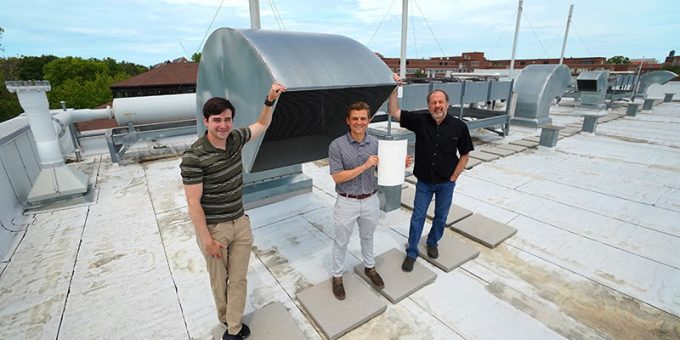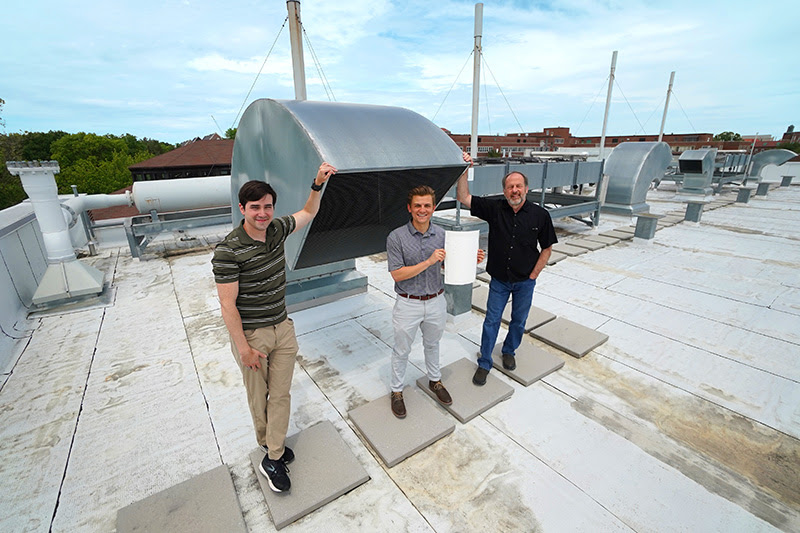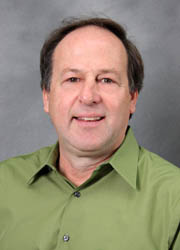
WEST LAFAYETTE — By now, it’s well known that circulating outdoor air in buildings is safer than recirculating indoor air. That point was driven home by the pandemic. Problem is, it’s just not cost-effective.
That may soon change. Purdue University engineers have proposed a system that combines new membrane technology with the latest HVAC systems to make 100 percent outdoor air systems more energy-efficient and economically feasible – especially in warm, humid climates. They say their system could save up to 66 percent in energy costs for large buildings that choose to use the safer outdoor air.

Previous research at Purdue has shown that HVAC systems (heating, ventilating, and air conditioning) are a key factor in spreading airborne diseases like COVID in indoor environments like office buildings, restaurants and airplanes.

“Most people don’t realize the complexity of a modern HVAC system,” said James E. Braun, the Herrick Professor of Engineering and director of the Center for High Performance Buildings at Purdue. “There’s a specific sweet spot for humidity in an indoor environment — between 40 percent and 60 percent. Any drier than that, and people aren’t comfortable; any more humid, and you’re at risk for mold and other problems.”
So, simply opening windows is not a solution.
“If you introduce outdoor air, the humidity levels of a building can fluctuate wildly. It’s an incredible challenge to maintain the right balance between temperature, humidity, human comfort and overall cost.”
In a typical HVAC system, Braun says, almost 40 percent of the energy is used to dehumidify the air. That makes the heating or cooling of outdoor air even more energy-intensive and costly.
To solve this problem, Braun teamed up with David Warsinger, assistant professor of mechanical engineering, who specializes in using membranes for water filtration and desalination. They have proposed a system called the Active Membrane Energy Exchanger, which integrates specialized membranes into the HVAC system to reduce the energy required to dehumidify the outside air. Large buildings like hospitals could reduce their energy costs up to 66% with such a system, compared to current fully-outdoor air systems.
Their research has been in published in Applied Energy.

“The membrane is the key,” said Andrew Fix, a Purdue doctoral student in mechanical engineering and lead author of the paper. We use membranes that are vapor selective, meaning they only allow water vapor to pass through when a pressure difference is applied but block air. Bypassing the air over these membranes, we can pull water vapor out of the air, reducing the load on the motors and compressors that run the refrigeration cooling cycle.”
To gauge the system’s effectiveness, the team used computer models created by Pacific Northwest National Laboratory of hospitals in different climate conditions. Hospitals are ideal test beds because they are large indoor environments, which often require a higher percentage outdoor air in their HVAC systems for safety purposes. The computer models showed an overall reduction in energy usage for all locations using the Active Membrane system. The more hot and humid locations – Tampa, Houston and New Orleans – showed the greatest energy savings.
“The more hot and humid it gets, the better our system works,” Fix said. “This is a key finding because as the climate continues to warm around the world, locations that want to use 100 percent outdoor air will now be able to economically afford it.”
The researchers are working toward building a physical prototype to validate their computer models. But there’s now more at stake than simply saving energy.
“I think COVID was a wake-up call for all of us,” Fix said. “Heating and cooling our buildings is not just a matter of temperature and humidity, but it can actually be a matter of life and death. Hopefully, this work will help to make all of our indoor spaces safer.”
Patent applications for this system have been filed via the Purdue Research Foundation Office of Technology Commercialization. This research is supported by the Center for High Performance Buildings at Purdue University (project number CHPB-50-2020).
Information: Jared Pike
Sources: David Warsinger, dwarsing@purdue.edu; James Braun, jbraun@purdue.edu



